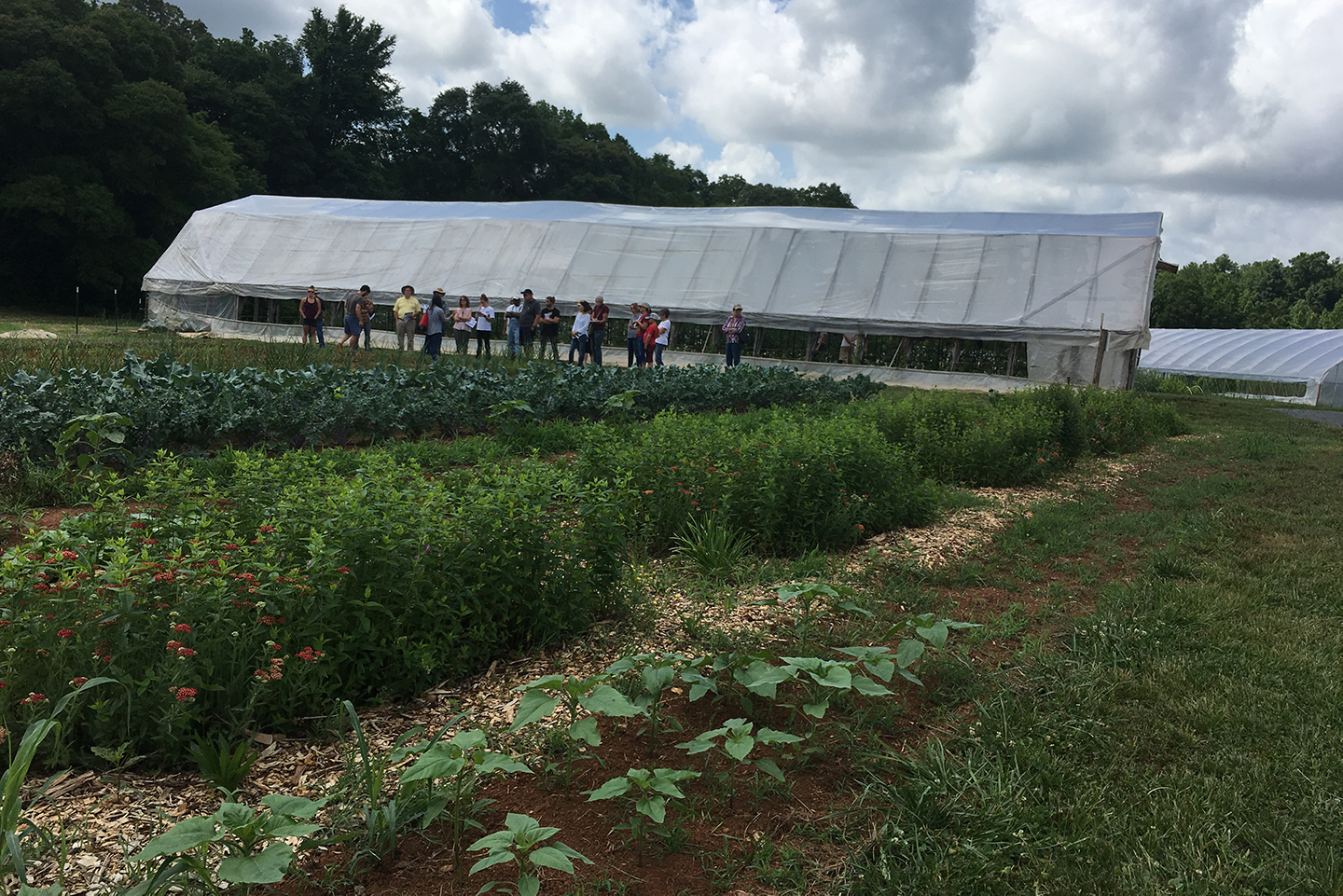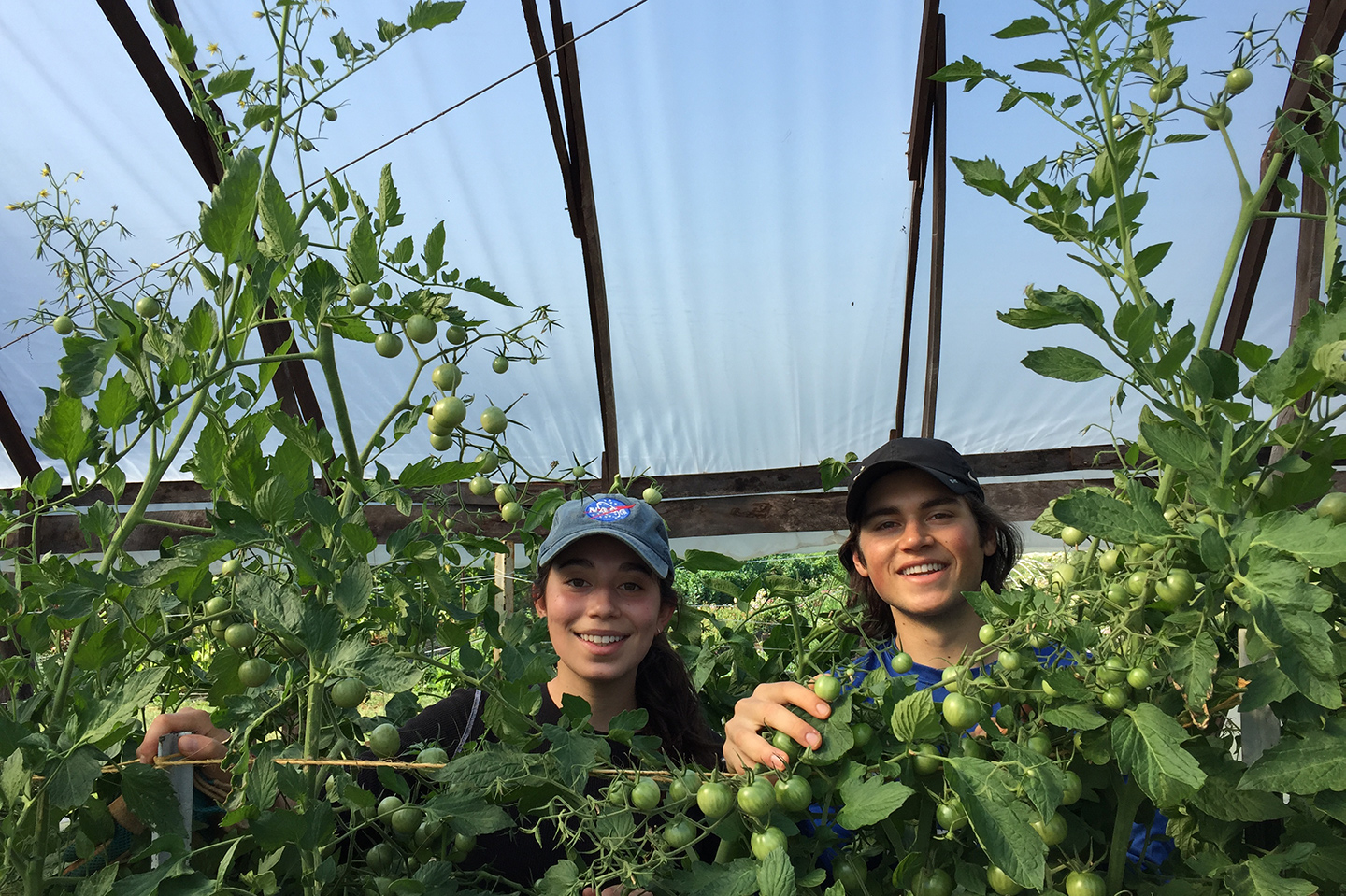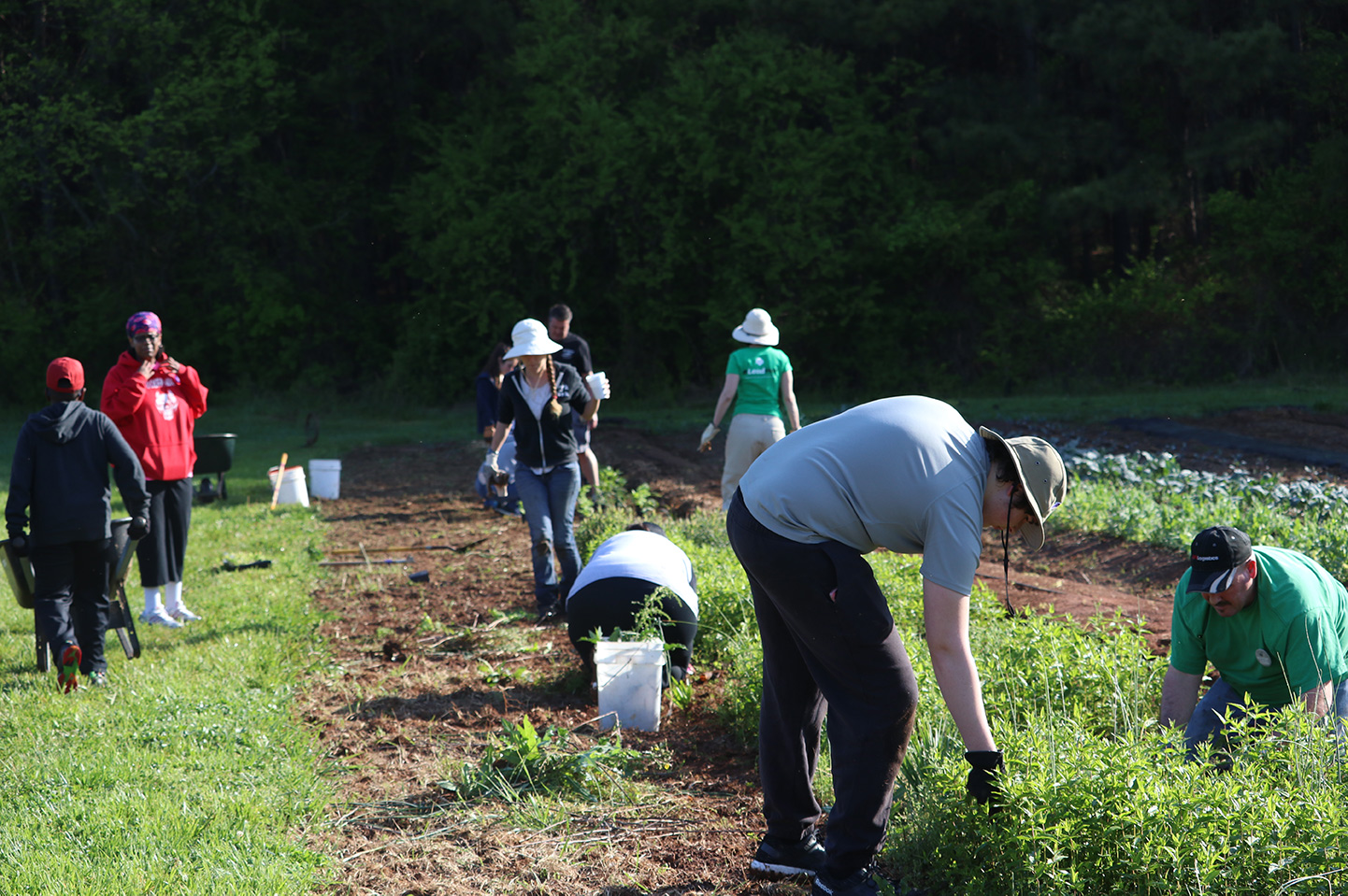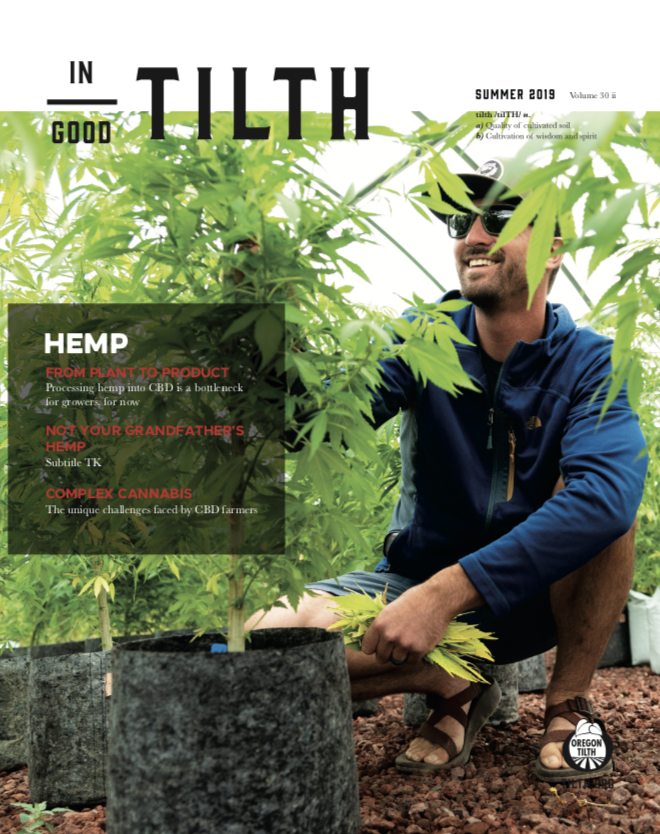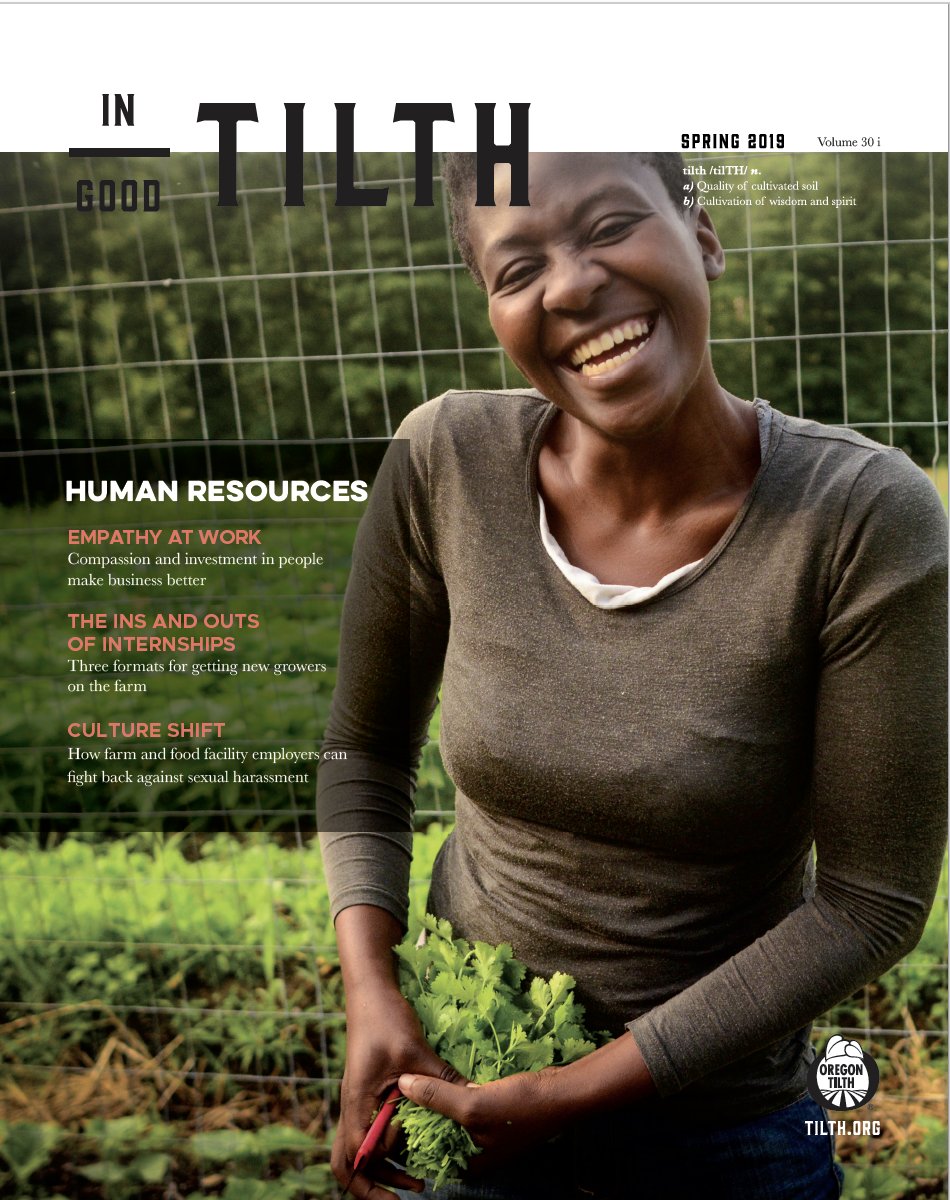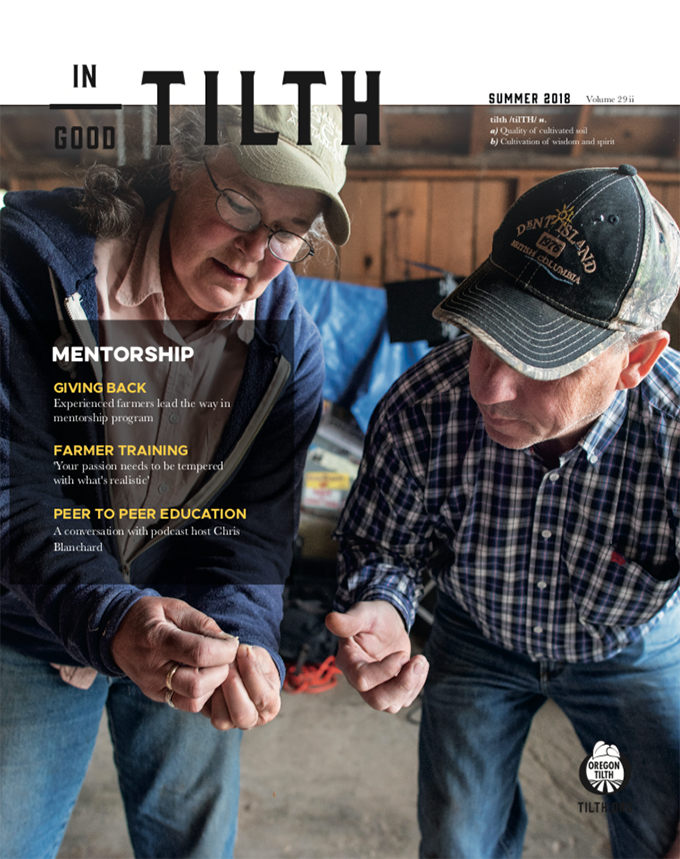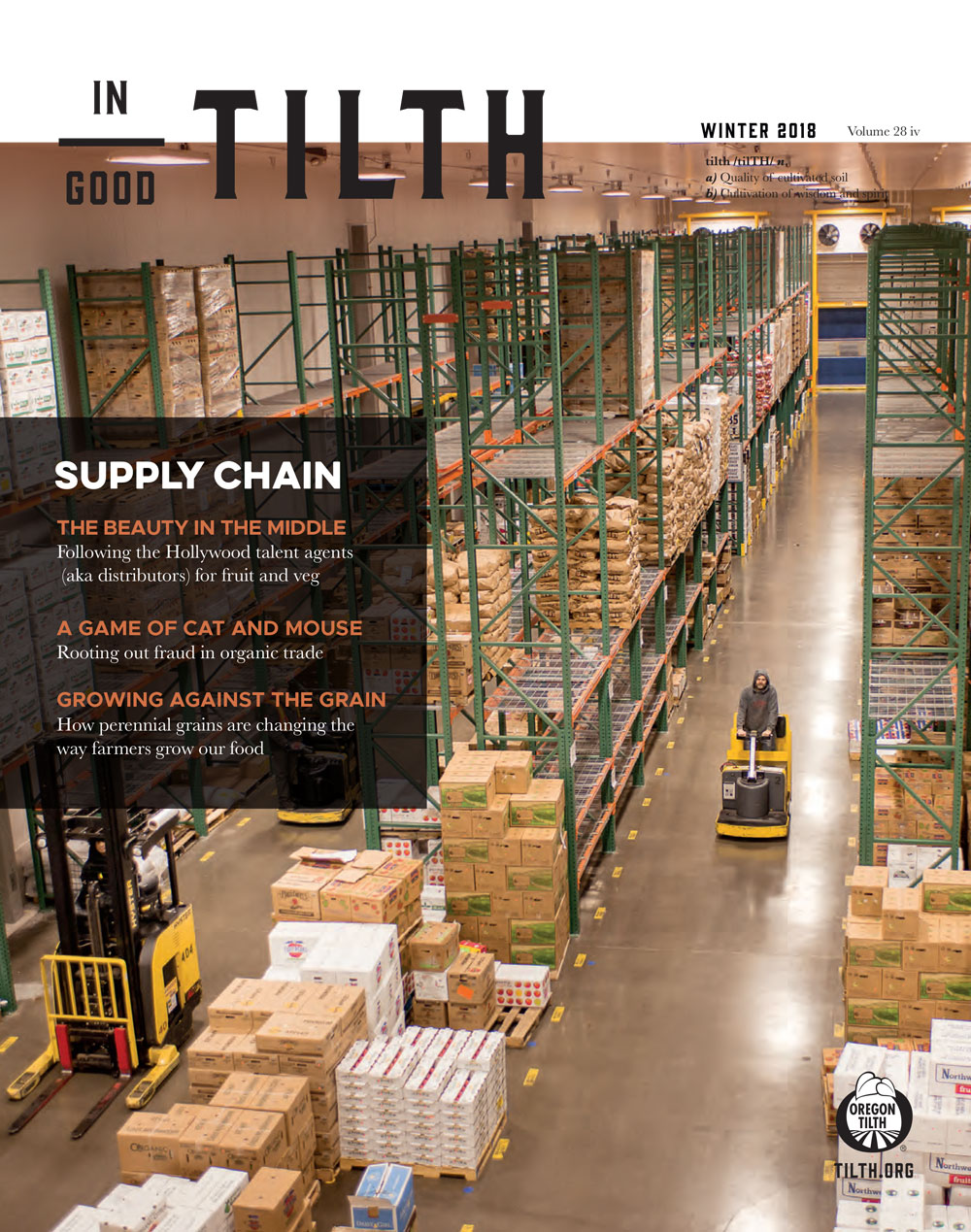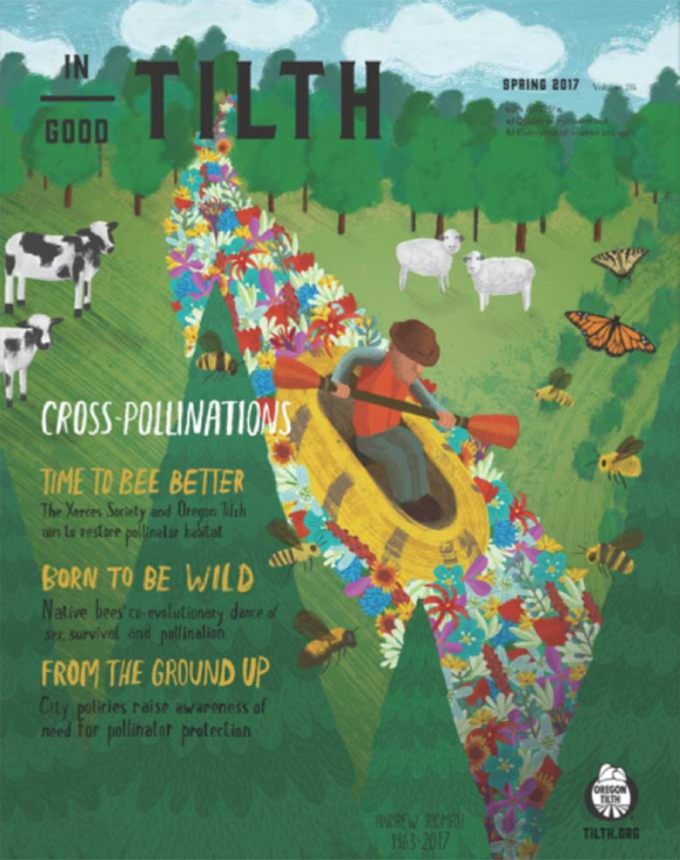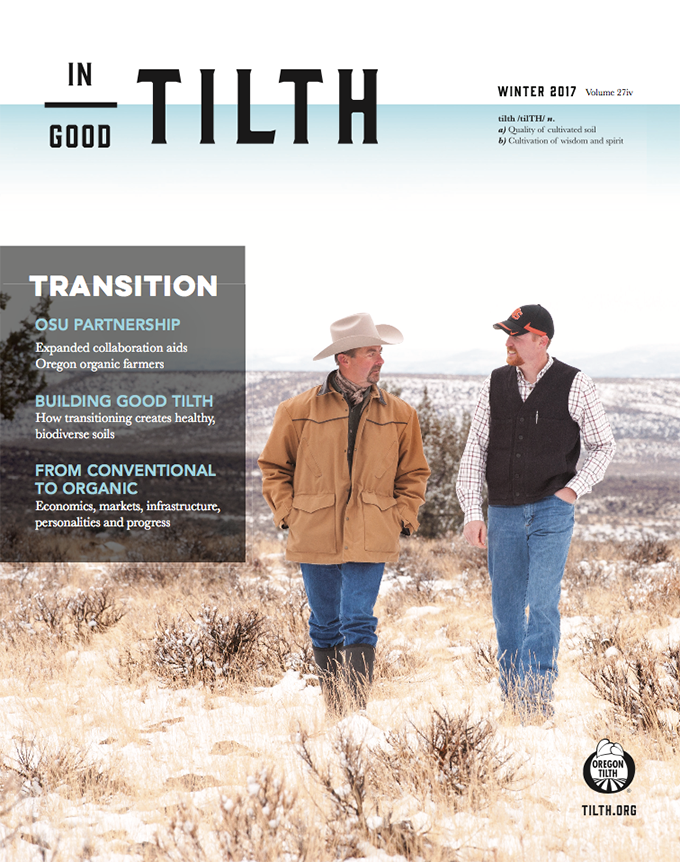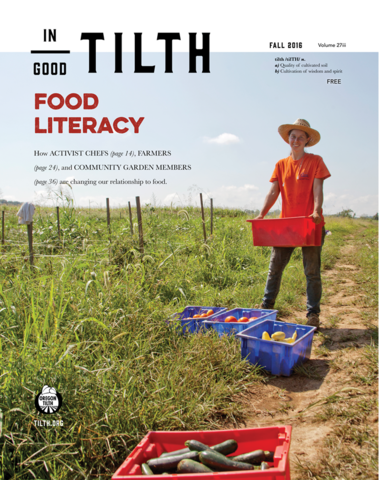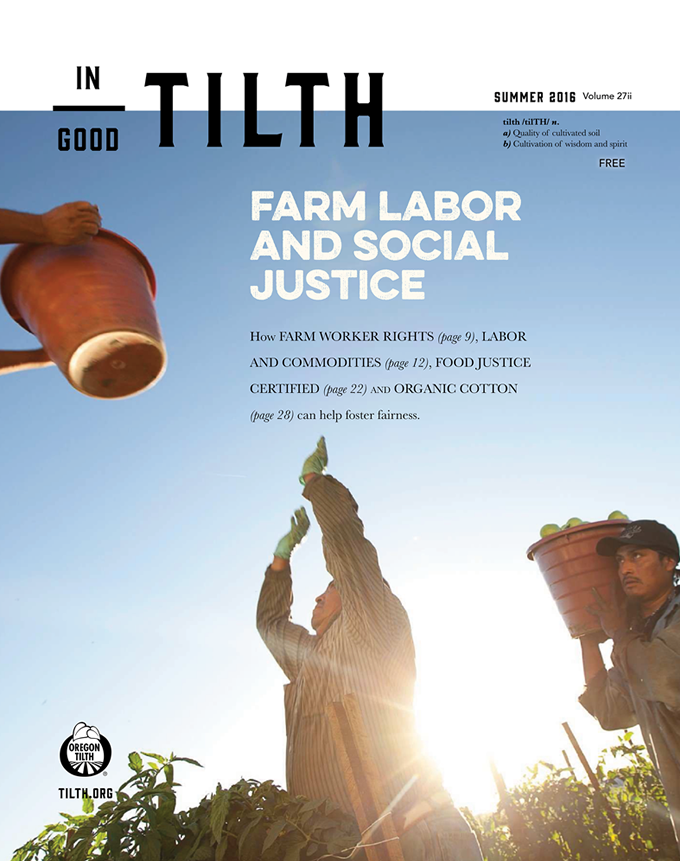Joe Rowland didn’t grow up on a farm, but he always wanted to be a farmer. Childhood memories of long, hot summers spent at his grandparents’ farm may have had something to do with that. Yet life took him in a different direction — working in restaurants in Boston and touring with his band.
“But I felt drawn to the land,” said Rowland. “I wanted to simplify things, produce food, work outdoors.”
For the past five years, he’s been running Rowland’s Row Farm just outside Charlotte, North Carolina. He and his wife, Dani, bought 18 acres of land that hadn’t been farmed for decades, and they now lease another 12 acres. They live on the farm with their two-year-old daughter. Joe grows 40 to 50 varieties of fruit and vegetables on six acres while another six acres are fallowed. And there is pasture where chickens roam. Since the beginning of the year, he’s been working with Dylan Alexander, who runs a nearby 14-acre farm. They coordinate deliveries, share machinery and help each other out.
“For the first time, it feels like this is a job I can do long-term and not just something crazy,” Rowland said. He’s even planning a vacation: he and his family will explore the Outer Banks for a week in August while Alexander takes care of things at the farm.
Rowland might not be farming at all if not for the Elma C. Lomax Incubator Farm in Charlotte. In 2009, a farsighted county manager had the idea that to build a local food economy based on small and medium-size local farms you might have to train the farmers first. Nine years later, Lomax Farm is overseen by the nonprofit Carolina Farm Stewardship Association. A third of the 30-acre farm can be used for vegetable growing. Then there are some steep slopes, forestland with wildlife corridors and a floodplain. The rest of the land holds infrastructure.
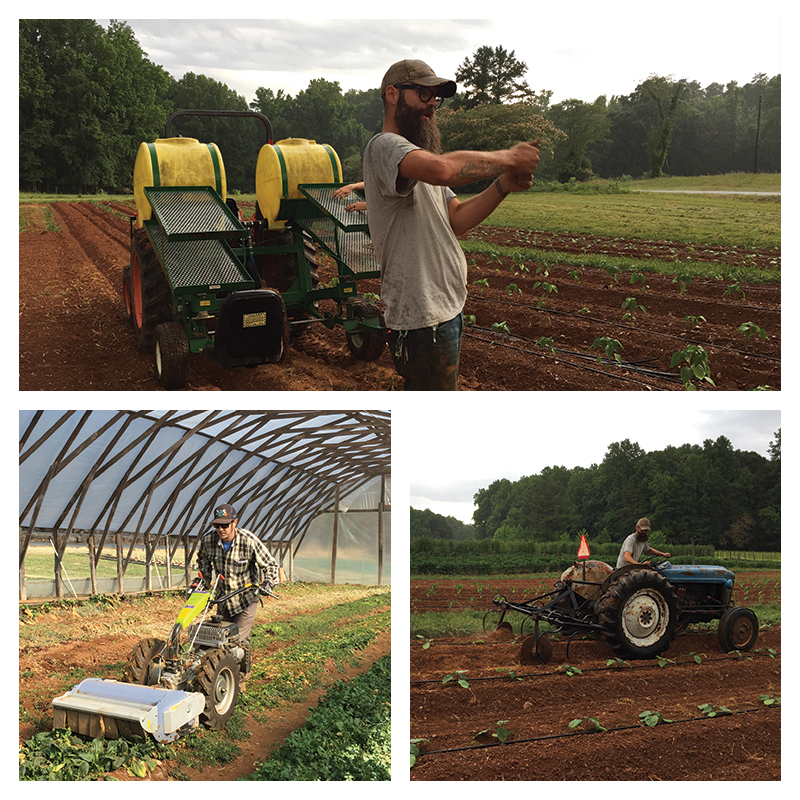
The initial idea was to let young farmers rent land at Lomax, build a market, establish their own business and, ideally at the end of a three-year period, shift production to their own farm. In the first year, trainees rent as little a tenth of an acre and, when they have shown they can grow a crop, move up to an acre in the second year. There were plenty of applicants when they started in 2009, said farm manager Aaron Newton, but hardly anyone had sufficient knowledge to grow anything.
“There were 40 people on the waiting list when I applied in 2010,” said Rowland, “but I started volunteering, showing up every day and taking the classes and within a few months I was offered a place.”
Today, five farmer apprentices, men and women, rent land at Lomax Farm. Ten more rent greenhouse and/or cooler space. About 20 people take part in the supply purchase program — a kind of buyers’ club model for the bulk purchase of farm supplies — and about 100 people participate in workshops and field days. For trainees, the land lease agreement starts in October when cover crops need to go in and the beds have to be prepared for early seeding. North Carolina winters are mild, so kale, cabbages spinach and salads do well in the cold season.
A community college runs a 32-week course at Lomax Farm, covering everything from biology and chemistry to cover crops, crop rotation, irrigation and technical skills. Add to that specific Lomax Farm workshops and practical training on post-harvest handling, food safety and organic certification. These courses are mandatory for the trainee farmers as is an additional monthly lecture, potluck dinner and get-together with the Lomax staff.
“It was absolutely overwhelming,” said Rowland. “Some of the stuff just made my head spin.”
But working on the farm, observing others, seeing them make mistakes or thrive gave him the confidence to transition and run his own farm. Looking back at his four years at Lomax Farm, is there anything Rowland would change?
There’s a difference between homesteading and running a business, said Rowland, and that difference should be emphasized more during training. Homesteaders can do a bit of everything — grow vegetables, keep bees, chickens, a hog and a cow. But farmers need to focus. The hard lesson he learned was not to do too much. Within five years, he wasn’t just growing vegetables, but also had 600 laying hens and 4,000 broilers.
“That’s too much,” he said. “It’s three enterprises with different needs.”
He’s decided to give up the chickens altogether (the broilers are gone, while the laying hens will go later this year) and focus only on vegetable production. “Your passion needs to be tempered with what’s realistic,” he said. “Now we are doing fewer things a lot better.” In his opinion, some economy of scale is a good thing — buying a tractor and being able to attach a weeder, he said, has changed his life. Now it takes him only 90 minutes to clear three acres, and for the first time he’s able to stay ahead of the weeds. He thinks trainees who want to farm (rather than homestead) need to have answers to these questions when they start out: How do I fertilize and irrigate? What’s my strategy against weeds? How do I pick my crops and store them correctly?
One way of ensuring that trainees arrive at those answers is the mentoring program Lomax Farm is starting this year. Rowland will be one of the mentors. He’s already met his mentee, who has just started taking classes at Lomax, and on Rowland’s farm he will see how theory (like how to irrigate) is put into practice. As horticulture continues to sit in the “specialty crop” niche, agricultural colleges offer little or no training. That’s where Lomax Farm steps in.
The farm has to do a lot more than train five to 10 farmers a year to get the necessary funding, said farm manager Newton. Lomax Farm is now accommodating school visits on a regular basis, organizes more field days and workshops and conducts research.
Gena Moore, CFSA’s organic research coordinator, ran the first program from 2016 to the end of last year. Heirloom tomatoes are an extremely important crop for farmers in the Carolinas, said Moore. She compared the performance of three heirloom tomato varieties to that of grafted heirlooms. Tomatoes thrive in high tunnels, which can get very hot in summer. Moore therefore used a vigorous and heat-tolerant rootstock. The grafted tomatoes had a much higher yield, and running the numbers at the end of the year proved that using grafted heirlooms makes economic sense. Moore, who worked with trainees throughout the year, will share the results with other growers. The trainees, she said, learned a variety of new skills and, she hopes, picked up a scientific approach to problem-solving. The next research project is already underway.
Sometimes it takes a while to find your passion. Haden Gooch started his farming career in Oregon growing vegetables.
“I hated it, because you are bent over all day,” said Gooch, leaning on a pitchfork. He was shifting hay within reach of around 50 Holstein and Jersey cows ready for milking. It took Gooch being laid off by the bank where he’d been working to think back to the summers spent at his grandparents’ beef farm to remember that he really loves cows. He decided to give ag college a pass so as to not start out with thousands of dollars of student debt, and instead worked on a farm in his native state of Virginia. Gooch got to work with beef cattle, laying hens, ducks and broilers, and learned to appreciate the diversity of the farm – not just in terms of biodiversity but also income risk management. Dreaming of running his own farm one day, Gooch decided to get more formal training and started looking at dairy farms in New England offering a dairy grazing apprenticeship. After a tour of Wolfe’s Neck Center for Agriculture and the Environment (or, Wolfe’s Neck Farm as it is formerly known) he looked no further and applied.
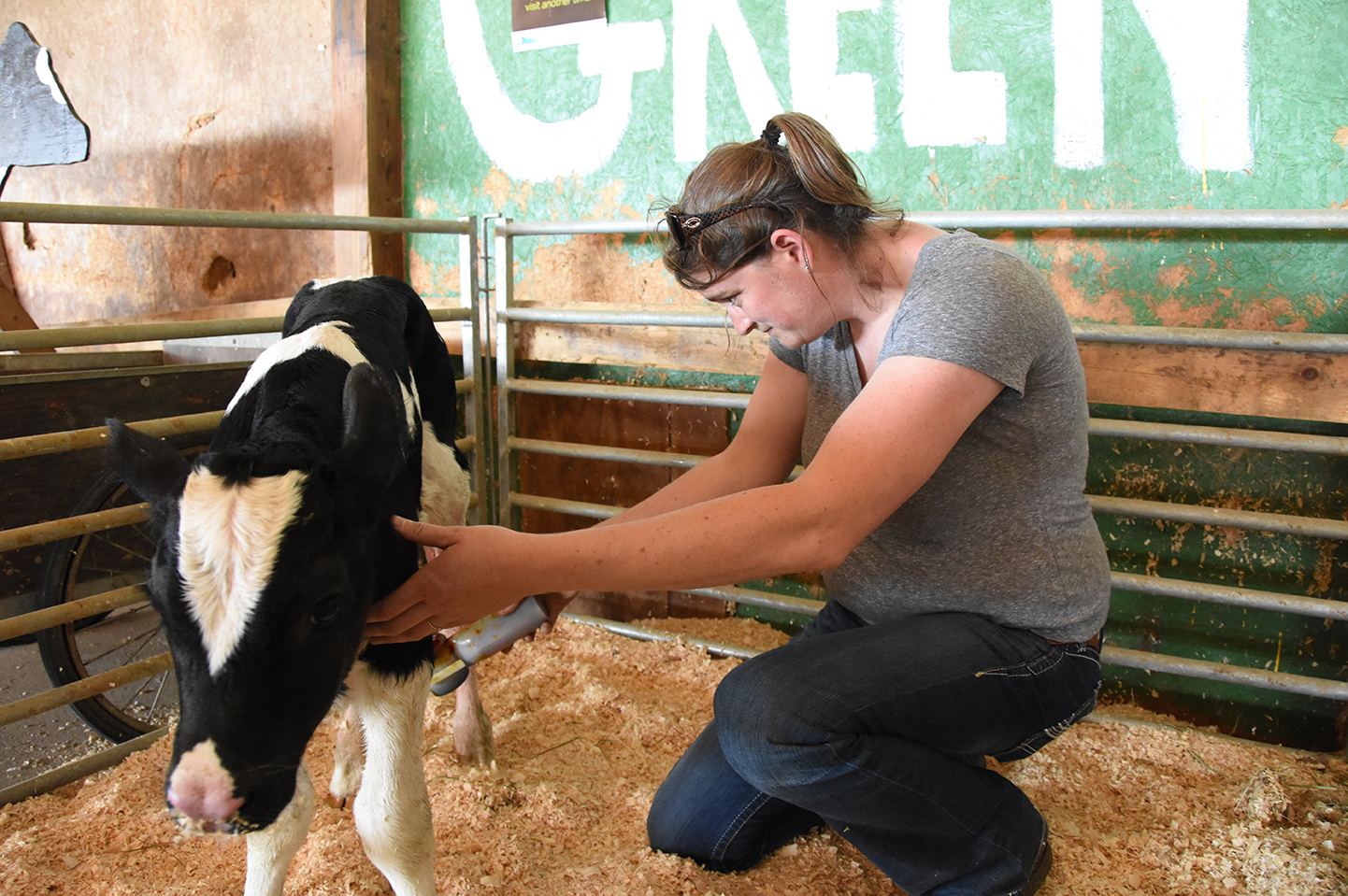
Situated on the coast of southern Maine, Wolfe’s Neck is a stunningly beautiful and unique place. The land has always been farmed organically. Initially, the Wolfe’s Neck Farm Foundation focused on running a successful dairy operation. But as education is part of the foundation’s mission, in 2014 it began exploring options for a trainee program, said David Herring, the executive director.
Wolfe’s Neck cooperated with Stonyfield, the organic yogurt maker from New Hampshire, secured USDA funding and became a partner of the Dairy Grazing Apprenticeship (DGA). Based in Wisconsin, DGA is the only U.S. Department of Labor-accredited agricultural apprenticeship program.
“It’s a two-year commitment,” said Sarah Littlefield, the dairy director and one of three masters on the farm. “You have to be available at 4:45 a.m. for milking, agree to a 50-hour work week on average and take part in all aspects of work on the farm.” The apprentices get 4,000 hours of training — 3,712 on the farm under an approved master and 288 in the classroom provided via live feed from DGA in Wisconsin. The apprenticeship is paid (about minimum wage), and accommodation and course fees are subsidized. Course work, the “skills book” (which documents the apprentices’ progress) and an assessment by the masters are the basis for the successful completion of the program. Another three years of training are needed to become a master grazier.
Four trainees are now on the farm at all times, and the first apprentice has successfully completed the course. In addition, Wolfe’s Neck is reaching out to other farms in the region that may want to host an apprentice. Twenty farms have already signed up and Littlefield visits the apprentices on a regular basis to supervise their training.
What does it take to become an apprentice? Applications go through the DGA website, which works a bit like a job matching site. But it’s usually after a visit to the farm that things become clear. For Littlefield, an apprentice “needs to have passion for dairy, and you must understand cows, you need patience to deal with cows.”
Lauren Robertson is originally from Portland, Oregon, where she earned a bachelor’s degree in animal science and a master’s in agriculture.
“Without practical experience nobody gives you a job,” said Robertson, who will finish her apprenticeship early next year. She loves the intensity of the learning experience, saying, “There is no such thing as a dumb question here.” The four trainees have become a tight-knit team, with their different backgrounds and interests serving to help each other out. Robertson has helped Gooch get a better understanding of genetics and breeding — the farm will have its first three-way crossbred calves soon. Gooch has taught her a lot about grazing and calculating stock density.
“We do planned management intensive grazing here,” said Ben Jensen, livestock manager and master at Wolfe’s Neck. He and operations manager Matthew DeGrandpre (the third master) have just checked the moisture content of the hay they want to bale, and it’s still too wet. It’s a good time to talk about grass management and keep an eye out for the beautiful ospreys that are returning every few minutes to feed their young waiting in a huge nest perched on a utility pole.
During the season, cows are moved onto a new pasture every 12 hours, said Jensen. In August, it’s night grazing only because it’s too hot outside for the black-and-white Holstein cows. But Jensen’s first grass management lesson is: “”Start with the soil and take it from there. We are here for the amusement of soil organisms.”
The farm’s four apprentices have different abilities and personalities. Tasks are allocated by the day. If the pressure’s on to get chores done, everyone has to work to their strengths. On quieter days, there’s time for one-on-one training. Occasionally, that even happens by phone. A few weeks ago Gooch went to check on a pregnant cow and found her in labor with one hoof of the calf sticking out the wrong way around — a dangerous situation for mother and baby. It was 10 p.m. Littlefield was traveling and Gooch could only reach her by phone. He put her on speaker and she talked him through how to feel his way to the calf’s head, straighten its leg and help the exhausted cow deliver it safely. It was a very proud moment for apprentice and teacher.

